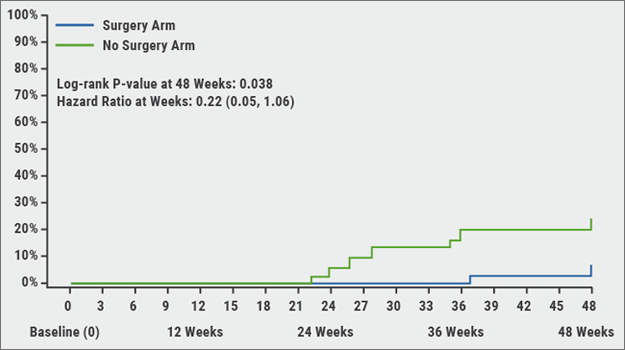“The body of evidence on the effect of air pollution on pulmonary disease is quite large, but concerning interstitial lung disease (ILD), knowledge on air pollution is still in its infancy,” Dr Marya Ghazipura (Marron Institute of Urban Management, NY, USA) said. Today, only 12 studies exist on this topic, with most of them focusing on idiopathic pulmonary fibrosis (IPF), all of them in population-dense regions [1]. Even less is known about the effects of air pollution exposure on non-IPF ILDs in populations that are not in major metropolitan regions.
“The aim of our study was to quantify the short-term effects of outdoor air pollution on hospitalisations in a population of patients with ILD in the Intermountain West region of the US,” explained Dr Ghazipura. Therefore, a cohort of 1,365 patients with ILD across this region was followed at the University of Utah, with hospitalisation data collected from 2009–2018 [2]. Daily concentrations of major pollutants (atmospheric particulate matter with a diameter of <2.5 micrometres (PM2.5), nitrogen dioxide (NO2), and ozone (O3) were calculated using 2 models of exposure assessment: one by ground-level monitors, where weighted concentrations of all monitors within a 20 km radius of the patient were obtained, and one optimal interpolation (OI) model, a validated model integrating satellite remote sensing data. A time-stratified, case-crossover study was performed using a 14-day interval to estimate the association between short-term exposure to air pollution and hospitalisations. Results were stratified by high (March to October) and low (April to September) ozone months.
No association was found between concentrations of PM2.5 and O3 and the risk of hospitalisation in both models. In contrast, the OI model found that in the colder season, an interquartile increase in daily average NO2 exposure was associated with 1.5 times the odds of being hospitalised. This association was significantly more pronounced in men. “We would not have been able to detect this significant association with NO2 if we had only relied on the monitors, considering all the monitor gaps in the Intermountain West region. For NO2, using the OI model was critical,” Dr Ghazipura explained. She concluded that further research on this topic will help to give evidence-based guidance regarding air pollution to this already vulnerable patient group.
- Harai S, et al. Eur Resp Rev 2020;29:200093.
- M Ghazipura. Impacts of air pollution in patients with interstitial lung disease. Session TP066: Diffuse parenchymal lung diseases: ILD, sarcoidosis, IPF, LAM. ATS 2021 International conference, 14-19 May.
Copyright ©2021 Medicom Medical Publishers
Posted on
Previous Article
« Tobacco biomarkers do not improve prediction of lung cancer risk Next Article
Lenvatinib-pembrolizumab combo promising in advanced kidney cancer »
« Tobacco biomarkers do not improve prediction of lung cancer risk Next Article
Lenvatinib-pembrolizumab combo promising in advanced kidney cancer »
Table of Contents: ATS 2021
Featured articles
Letter from the Editor
COVID-19: What Pulmonologists Need to Know
Antibody treatment for COVID-19: a combination is successful
Air pollution: an underestimated negative prognostic factor for COVID-19
Healthcare workers vulnerable to SARS-CoV-2 infections
Genetic risk variants responsible for COVID-19 predisposition
Asthma – An Update
“As-needed” inhaled corticosteroid therapy for mild asthma – what is the evidence?
IL-4/13 blocker successful in treatment of paediatric moderate-to-severe asthma
Benralizumab lives up to its phase 3 results in real-world findings
Tezepelumab – good success rates in various types of severe asthma
Sleep Disorders – An Underestimated Problem
OSA: A risk factor for earlier cognitive decline
Subgroup of patients with high heart rate response and coronary artery disease benefit from CPAP
Association between positive airway pressure treatment adherence and COVID-19 infection rates
COPD – What Is New
Possible aetiologies for COPD exacerbations – more evidence is needed
Does COPD plus COVID-19 equal higher mortality?
Biomarkers for acute exacerbations in COPD are required
Severe exacerbations: A key driver of all-cause mortality in COPD patients
Men and women with COPD differ in many ways
Younger adults with COPD at higher health risk than previously thought
Metabolic Dysregulation and Lung Disease
Obesity: A risk factor for new-onset asthma and worse asthma control
Metabolic dysfunction and lung disease: children are no small adults
Best of the Posters
Air pollution in winter linked to more hospital admissions in ILD patients
Tobacco biomarkers do not improve prediction of lung cancer risk
Vaping identified as risk factor for asthma
Related Articles

November 7, 2018
Gastroesophageal reflux, IPF and lessons learned
July 18, 2022
New guidelines for IPF and PPF

June 9, 2022
ATS 2022 Highlights Podcast
© 2024 Medicom Medical Publishers. All rights reserved. Terms and Conditions | Privacy Policy
HEAD OFFICE
Laarderhoogtweg 25
1101 EB Amsterdam
The Netherlands
T: +31 85 4012 560
E: publishers@medicom-publishers.com

